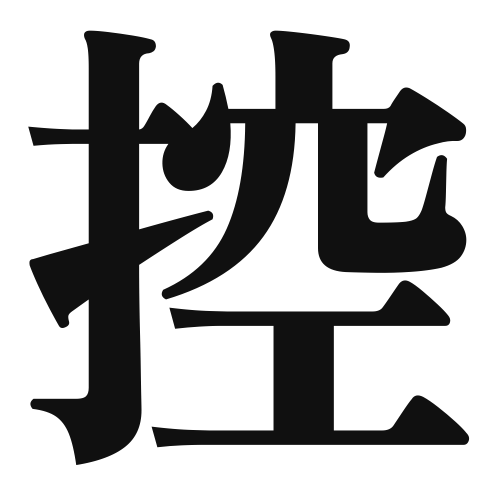1. Overview of Meaning
The kanji “控” (pronounced “ko” or “hiku”) generally means “to restrain,” “to hold back,” or “to control.” It is often used in contexts where moderation or limitation is required.
2. Formation and Radical
Formation of the Kanji: The kanji “控” is a phonetic-ideographic character (形声文字). It combines the radical for “hand” (扌) with the phonetic component “cong” (恭), which relates to respect or politeness.
Radical: The radical of “控” is 扌, which is related to actions performed by the hand, indicating a connection to physical restraint or control.
3. Examples of Usage
Common Words and Phrases: Some frequently used words that include “控” are:
- 控えめ (hikaeme) – modest, reserved
- 控訴 (kōso) – appeal (in a legal context)
Example Sentences in Daily Conversation:
- 彼は控えめな性格です。 (Kare wa hikaeme na seikaku desu.) – He has a modest personality.
- その判決に控訴します。 (Sono hanketsu ni kōso shimasu.) – I will appeal that judgment.
4. Synonyms and Antonyms
Similar Kanji: A similar kanji is “抑” (yoku), which also means “to restrain” but often implies a stronger sense of suppression or control.
Opposite Kanji: An antonym is “放” (hō), which means “to release” or “to let go,” indicating the opposite action of restraint.
5. Cultural and Historical Background
Relation to Japanese Culture: The concept of restraint is significant in Japanese culture, reflecting values such as humility and self-control. This is often seen in social interactions and traditional practices.
Proverbs and Idioms: One relevant proverb is “控えめが美徳” (Hikaeme ga bitoku), which translates to “Modesty is a virtue,” emphasizing the cultural appreciation for restraint and humility.
